This was a fun interview with Marshall Shore – Arizona’s Hip Historian.
I love talking about the people who populate the postcard world.
This was a fun interview with Marshall Shore – Arizona’s Hip Historian.
I love talking about the people who populate the postcard world.

The Northern Lights are called the Aurora Borealis, named after the Roman goddess of dawn, Aurora, and the Greek name for north wind, Boreas. The marriage of dawn and the cold north wind describes for me exactly what I saw each and every time I’ve had the fortune to see this performance in the night sky.
Northern Lights – that magical, mystical phenomena of the northern skies have intrigued and fascinated humans for millennia. I was fortunate to have lived in rural Wisconsin as a child and recall those very rare and special times that the Northern Lights appeared. We lived on a lake, where there were no other permanent residents, with almost no light pollution. My mother would make sure I looked every time they appeared from nowhere and into the sky above the lake. The inky black sky provided the background for the brilliant, fluid light show. I didn’t understand the phenomena, but found the shimmering, ephemeral lights a magical experience. I knew the lights were only visible in the far North (and far Southern locations) in the world, so I was sad when we moved to Arizona. I was sure that I would never see the lights again in my life. They were unpredictable and rare enough even there, appearing and disappearing like splendid apparitions in the dark.
Decades later, I lived in Montana and had long forgotten about the Northern Lights. Driving through the Yellowstone River Valley I noticed that the sky out the left side of my car was bright. It was well past sunset, and I wondered if there was a fire. It was dark, the night was still and there was no moon. The highway was empty and I was thinking about work on Monday. The light puzzled me, so I looked again and saw a sheet of light, moving across the sky and falling like rain to the horizon. For minutes I didn’t know what I was looking at, and then realized that I was looking at my beloved Northern Lights. I stopped the car on the side of the road and got out to watch. I stood for quite a while and enjoyed the show – light green to yellow to white moving and waving. I could hear the crackle and hiss often described. The show’s expanse across the night sky was astonishing. It was so broad that I couldn’t see it all in front of me, so I turned my head back and forth and looked up to see it all.

As I stood there, I looked at the Yellowstone River and wondered about the people who lived in this place before. I was so curious about what the Crow Indians thought about these strange lights in their sky. Did these lights inspire fear or wonder or inspiration or something else? What stories did they tell around their fires to explain this and how did they make sense of it? What did the fur trappers, explorers and settlers think of this display? Imagine being woken in the middle of the night because it is suddenly light. I hope that these people thought it was wonderful and magical.
The Ojibwa tell a story of ice that reflected and refracted the light of the sun to illuminate the People’s way through a dark world. The Cree call the lights the “Dance of the Spirits”.
No matter what it is called, or what explanation exists for the lights, they are a source of wonder and magic.
Enjoy your nights and Look Up!
Griffith Observer, the magazine of Griffith Observatory, Los Angeles, California
Recently, it occurred to me that I’ve been walking for a very long time and for very many reasons. I live in Los Angeles, and I find walks here with trees and flowers and hills. Vacations are consumed with walking, getting lost, exploring, whether in a city, or a rural area.

When I was a child, I lived on a lake with woods and fields patchworked around our house. Because it was rural, I had one accessible friend, who lived across the road. We didn’t really talk on the phone, and her family had a dairy farm, where the work never stopped. Summers were pleasantly long, both in terms of days and weeks, and sunlight hours. We all walked, explored, and spent much of every day outside.
That led me to walking. I would walk around our small lake, English Lake. At the time, just two families lived there year round, 2/3 of the lake had tiny, charming cottages and the other 1/3 was open land. I’d generally travel around the lake counter-clockwise, leaving our house, sliding down and then climbing up the grassy ditch next to the house. I’d climb a big hill, on a dirt road that twisted through the woods. Sometimes, I would take a detour and wander through those woods on the way to the end. Often, I’d get no further than those woods, or the edge between wooded land and tilled field – sometimes corn, sometimes oats, sometimes alfalfa.
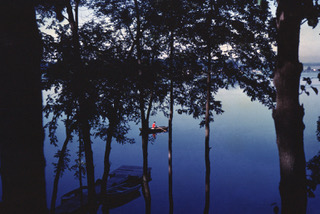
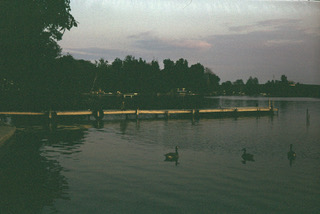
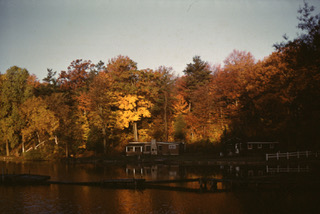
Those woods seemed enormous to me, but always cool and quiet. I knew the names of the flowers, trees and bushes and would check on the progress of their blooming, or withering, depending up on the time of year. The rarest and most special find was always the trillium. This was a treasure, which I didn’t see every year. I knew not to pick it, because it was rare and special. In those days before environmental awareness and the endangered species act, my mother had reverence for those special things in our woods. It was just the right thing to do.
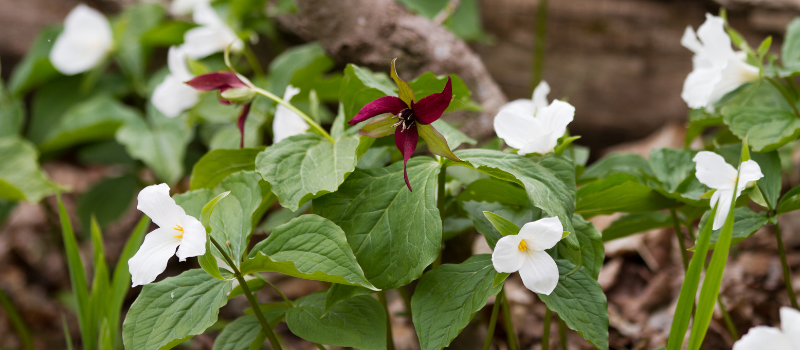
The corner of the woods, at the top of the hill, had a swamp. Somehow, I was convinced that quicksand was lurking behind the next small tree, so I never ventured very near. Perhaps too many books and movies with some hapless person being pulled into quicksand, with overtures of a long demise. I would see cat tails and turn back.
Passing those cottages, I would recite the family names to myself. The Mullins, Kronbergs, Hoyers and, so on. That road ended with a small cottage owned by my Dad’s employers. During the week, no one was around, but on the weekend, there were lots of boys, who I found fascinating. Endless summers, of fishing, swimming, walking, woods, fires, s’mores, corn on the cob, butter dripping down our chins.
I’d cut through their yard, walk through a field and pick up another road for the back side of the lake. I didn’t know the families on this side of the lake, but my imaginary friend, Janie lived here. Although by the time I could walk around the lake, I didn’t have that friendship any more, I knew she was happily living in one of those cottages, enjoying some kind of parallel life. I always thought about her when I traveled this part of the lake.
If I was walking in the middle of the week, I’d walk along the lakeshore, very low on this side. Green grass dropped off into the water. Weeping willows drifted in the breeze and the lake was very quiet. The cottage dwellers were off at work in town, waiting to return on the weekend. If I walked on the weekend, I would walk on another, very quiet dirt road that paralleled the water. Here, I’d see Queen Anne’s Lace, milkweed at some stage of development, and tall grasses in the ubiquitous ditches.
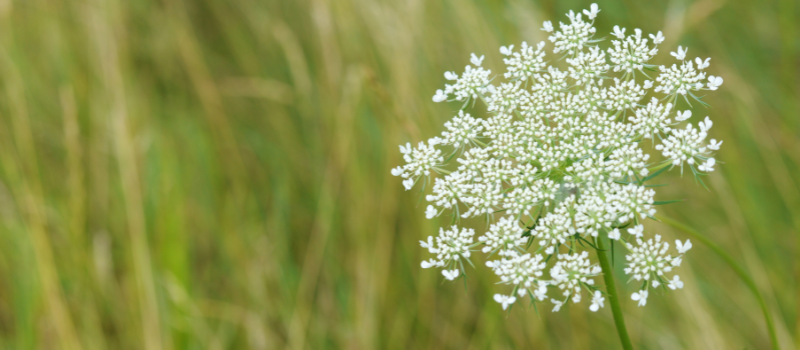
Every season, every day had its own little environment. Windy, cold, humid, hot, still, and everything in between. There are jokes about this part of Wisconsin and experiencing all four seasons in a single day. Depending on the weather, the scents were different. At a very specific temperature and humidity, the crops smelled mildly sweet and musty.
I’d sing my favorite songs to myself and I’d make up stories. These would take the form of who stays in the cottages and what were their lives like, or Janie and her adventures, or when I started reading Nancy Drew, I’d make up mysteries. Murdered people, who, of course, deserved to die, stolen items and ghouls of various sorts. Warm sunny days were filled with stories of Native Americans who lived there first.
At the end of that road, I’d cut across another yard and stop at the public access to the lake. This was a small dirt road that had a boat launch at the end for people who wanted to visit, but didn’t live on the lake.
I liked this place, because there were always lily pads, those magical half water, half land, creatures of water and sunshine. The road was flat, hard dirt, not gravel, so was much easier to walk along. I’d turn the corner, the vertical roads trying to hold in and define the very round lake.
This side of the lake seemed bare to me. Again a dead end dirt road – there was no way to do this, unless one was walking. The roads each dead ended in a field or at the lake, or in someone’s yard. A kid walking alone, with no fences could wander through quite happily.
I loved this side with its crab apple trees, where I would always stop for a quick bite. It didn’t really matter if they were ripe or not, I always had a bite or two. There were fewer cottages and by now, I had generally bored myself with the stories I invented.
The end of this road connected with my road, which was blacktopped the last year we lived there. I wouldn’t walk along the lake here, because I found the way too rocky and too steep. I’d follow the road until I got to the property two “doors” down from our house. Then, I’d cut back through the yards, going down to the lakefront and walking a very narrow, dirt path to our lakeside yard. I can see that path like it was this morning. The dark, rich, dirt was always damp. I don’t recall it ever being dried out. I think the soil must have absorbed the constant moisture from the air.
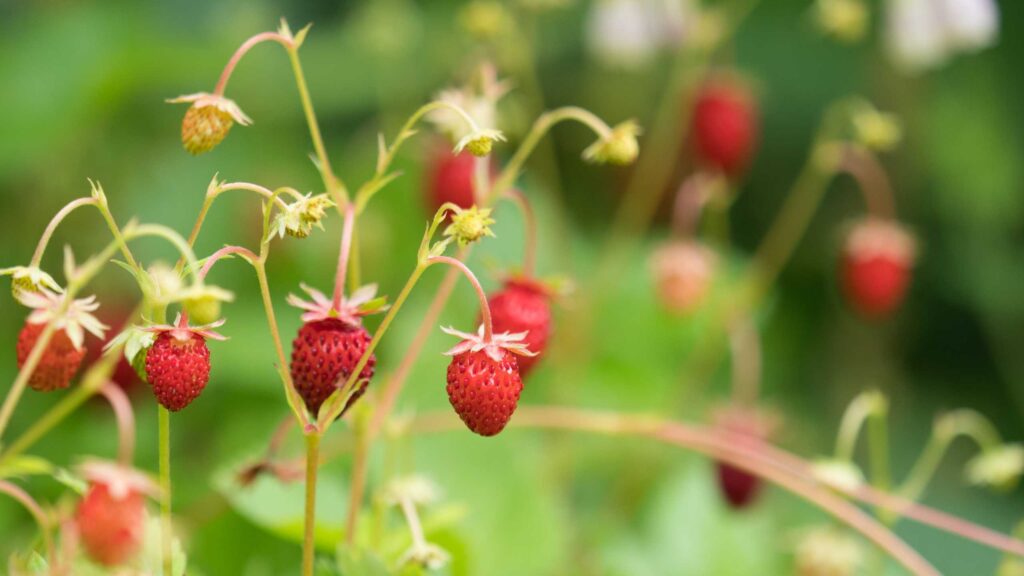
This side of our house was bordered by another woods. These woods had different flowers that I couldn’t find on the opposite side. I’d pick violets by the fistful to put in water glasses in my room. I loved the Wild Columbine, but I wouldn’t pick them. They just were not the same in a water glass as just being in the woods. There was something about their long, stringy stems that didn’t lend themselves to picking. I’d find wild strawberries that grew here and I’d check on them all summer, until they were ripe and then I’d pick and eat them. They never, ever made it home. That was my circle of the lake.
When we moved away to Phoenix, I was very sad, knowing that I would miss my wandering around the lake. I always thought that if we’d have stayed, I would still be walking around my lake in the woods.
Farmer’s Markets
I recently attended a book signing and lecture by a celebrity chef. By which I mean a chef who is a celebrity, not a chef who chefs for celebrities.
That digression is not the point of this missive, however. This is a well-known chef who made what I considered to be a rather snarky statement about the “middle states” finally starting and shopping at Farmer’s Markets. She specifically mentioned my home state of Wisconsin. She was extolling the virtues of the Santa Monica Farmer’s Market as a paragon of virtue.
I was rather taken aback by this comment as the reader has already deduced.
I was born in Wisconsin and lived there until I was 12 years old. My family lived outside of the nearest city, population 20,000. My mother, grandmothers, aunts, neighbors and all of their neighbors, whether living in the country or the city were the original “Farmers”.
We lived in the countryside, loving summer food. My favorite summer meals consisted of food that we caught, foraged, grew or purchased from local farmers. Sunday mornings started with church, but after Mass and breakfast at our grandparents, we wound our way back home through the countryside, picking up our favorite foods from the farmers and artisans who grew, raised or made the food.
The first stop was the egg lady. To this day, I don’t know her name or address. Hers was the white and beige house and barn on the road at the turn off to English Lake, where we lived. We’d pull into the gravel driveway and somehow, someone was always home, even if we didn’t arrive on Sunday. We’d run on the grass or swing on the swings while my mother went inside and bought our eggs for the week.
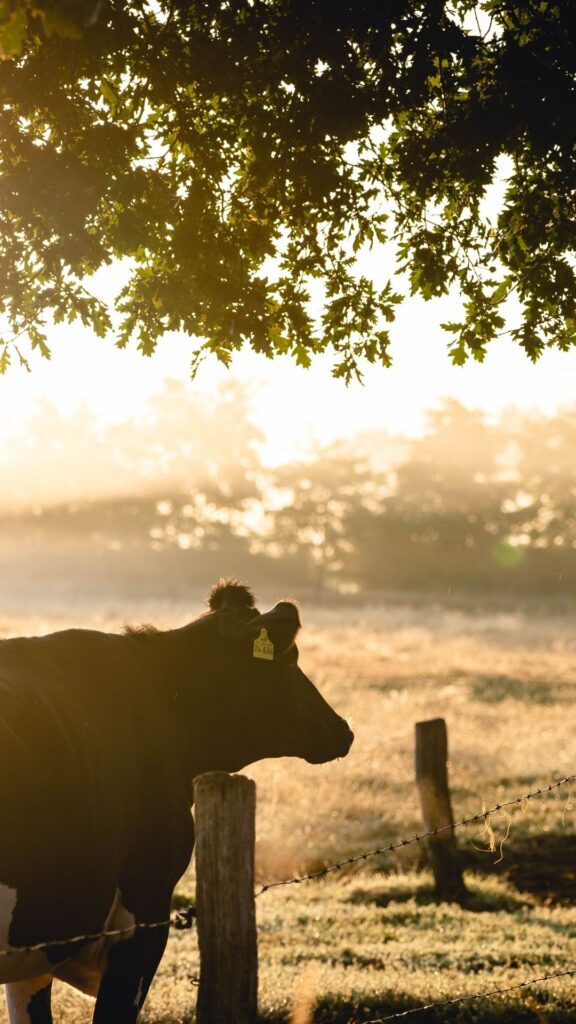
Down another country road, on the backside of the lake was Pine River Dairy. We’d pick up the original Land o’ Lakes Colby cheddar cheese and summer sausage. The treat would be fresh cheese curds, squeaky and creamy and mild. We’d pick up freshly made sweet cream butter and maybe milk. All of these were made in the back of this tiny building on a lonely road in rural Wisconsin. If the day was quite hot, we’d have freshly made ice cream in cones.
Somewhere along the way, a farm would have sweet corn or peas in the pod for sale. That would be a stop or two more.
Arriving home, we’d talk about supper that night. At different times of the summer, I’d pick or find other produce for our meal. Wild asparagus grew in the ditch at the side of our house. I’d go out and pick the spears, eating them along the way. I found a raspberry patch at the edge of the woods and field across the road and down the hill. I discovered that if I picked them later in the day, there weren’t so many bees. I loved the sun-warmed juice and the tiny crunch of the seeds.
We lived between two wooded areas – I always thought of them as the woods and the other woods. I could not tell you why that was. The other woods had patches and patches of wild strawberries. Tiny, small strawberries that I would have identified months before they bore fruit. I knew what the leaves and flowers looked like. Early in the summer, I’d walk through the woods, looking for the low plants and mentally mark the places. I’d pay attention to which trees the plants were near and go check on them with some frequency, waiting for the day I knew they would have berries. Somehow, I could never pick enough wild strawberries to make it back to the house. I’d always tell my mother about them, but I didn’t share.
Everyone we knew had a garden, lovingly tended and generously given. My grandmother grew carrots, beets, peas, beans, dill (still my favorite herb), potatoes, tomatoes, cucumbers (pickling and eating), pumpkins, and numbers of other produce I don’t recall now. Grandma had a black cherry tree, which I would climb and sit in and eat to my heart’s content. I could not get enough black cherries. She also had a regular cherry tree. I like the regular cherries, but there was nothing like black cherries, eaten while sitting in the tree. On days I was there with a cousin, we’d walk across the oat field to the apple trees. We had green apples with salt or red apples if we wanted something sweeter. We even loved fresh oats. The milky, sweet oats were another kind of treat to me. I loved the sweet juicy sensation balanced by the grainy texture of the oat.
Back at the lake, my brothers and I fished. We caught perch, bass, bullheads, crappie or sunfish. We were each taught to clean our own fish, although I never learned to bait my own hook. Walking down the hill toward sunset, the grass was cool and damp between my toes. Standing on the weathered pier, there were favorite places to cast our poles. Over by the lily pads always yielded a bite, but the trick was to avoid getting the hook embedded in a lily pad stem. Bullheads were easy – black bodies swimming around the sandy places. Sunfish and perch had their rocky nests built in the sandy areas. They were very particular and difficult to catch.
When the dill was perfect and summer days were long, we’d take flashlights into the lake and pick crawfish. We called them crabs, but I don’t think that is technically correct. We’d boil those with fresh dill, sometimes picked from the fields around our house, sometimes brought back from Grandma’s house. A little butter, fresh peas in the pod, still on the vine and strawberry shortcake for dessert. We had fresh cream from one of the stops on our way home. Shortcake was the classic, unsweetened Bisquick. I learned to make that when I was 8. It is still my favorite kind of shortcake. Not sweet, just really dense, soaking up the cream and strawberry juice.

My grandmother’s garden was another delightful food experience for me. She spent time showing us how to tell when a carrot was ready – not too old, but not so young that it was a waste to pull it. Beets needed to be cooked, rhubarb leaves were poison. Don’t eat mushrooms in the woods, and you could eat violets.
Then, at the end of summer, it was canning season. My absolute favorite were my grandmother’s dill pickles. She would boil the jars, get every towel and throw rug in the house. That sentence will seem odd to anyone who has never canned fruits and vegetables at home. After the jars are boiled (to sanitize them), after the pickling cucumbers are cleaned, the jars stuffed with garlic and dill, vinegar and water poured in, they are wrapped in rugs and towels. The rugs and towels hold in the heat and helps the lids to seal on the jars. My grandmother would test each jar – pushing on the top to make sure it sealed and would be safe to eat. The smell of dill and garlic in her steamy kitchen meant that summer was almost over. I was assigned various tasks, cleaning the dried mud off the cucumbers, warm from the garden. Or stuffing handfuls of dill into the jars. I knew that all winter, we’d have dill pickles, rationed so that we’d have a supply until next year.
My aunts still can and still make dill pickles every year. They can beets and tomato juice and other produce I don’t understand.
Our world was a Farmer’s Market. Care and attention and personal involvement were part of the food we ate, especially during the bounty of our short summers.
Sherry Dewane
We didn’t think of buying produce at a grocery store, which wouldn’t have the quality or freshness in any case. We didn’t think it was glamorous or green or politically correct. We just got the best food we could get and we used the resources we had.
We learned early that fresh off the vine, tree, out of the ground or off the stalk was always the best. Sun warmed, or cooled by night air, fruits and vegetables were at their best. Fish, fresh caught, cleaned and cooked as kids helped us understand where our food came from. We didn’t over fish, over pick or tear up our food resources. We had respect and a relationship with our food.
Now, I live in Los Angeles and think often, especially during the summer about the great and wonderful food that I found wandering around the woods and fields that were my neighborhood. Only rarely do I find a tomato as great tasting as those I picked when I was a child. Peas in a pod are like caviar to me, I lust after them in my heart. I salute city dwellers who buy at Farmer’s Markets.
Every time I see a Farmer’s Market I think about my childhood and our world that was one big Farmer’s Market. It is incorrect and arrogant to say that the middle states have ‘finally’ found the beauty of the Farmer’s Market – the middle states invented the Farmer’s Market. The heritage of the local family farm, fresh produce, fresh cheese and meat and fish came from and have sustained innumerable communities in the great middle states of this country.
I am grateful to have lived at least part of my life enjoying the freshest food available, the Farmer’s Market of my childhood.
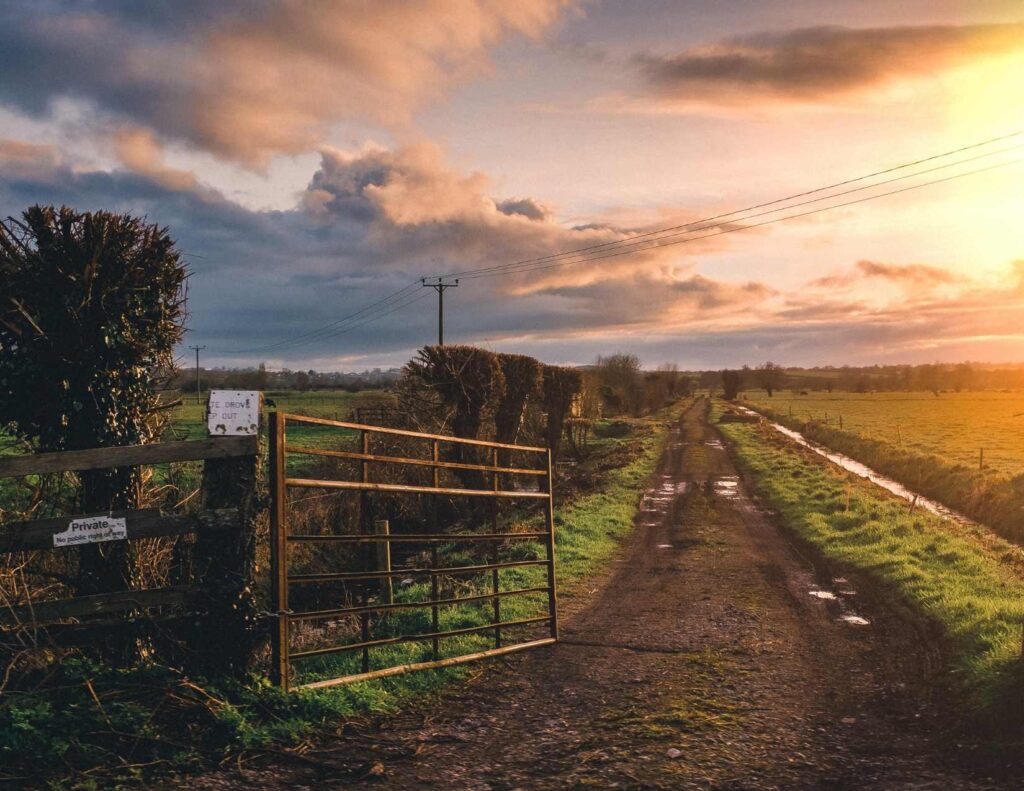
I was featured in a news article and interviewed for a radio show last week by Seehafer News. Below is an excerpt from the article:
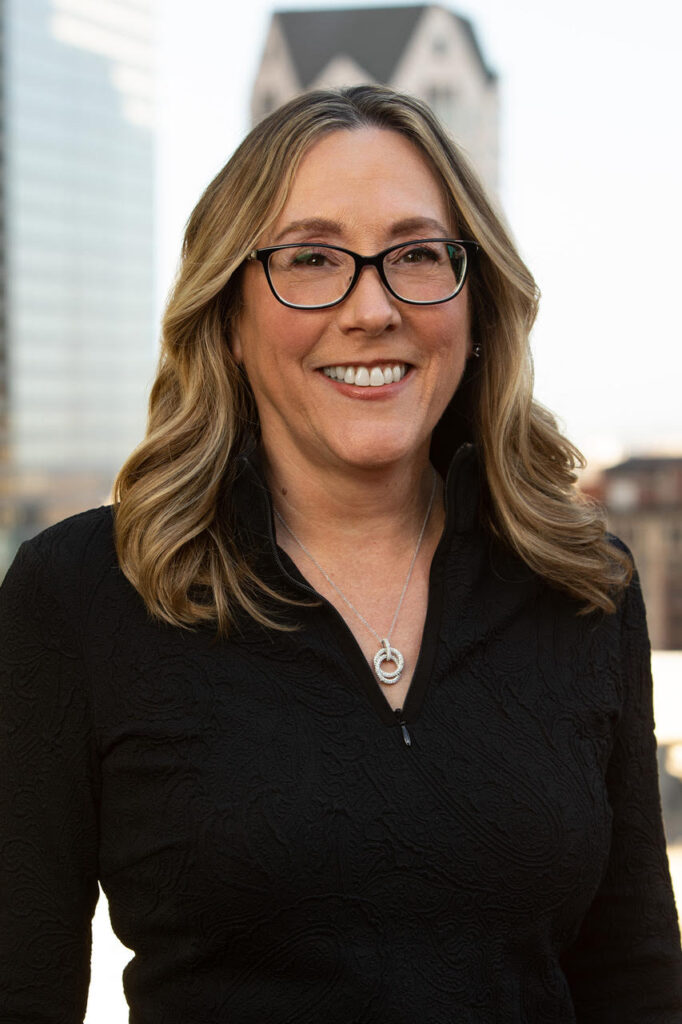
“Sherry still sees herself as a ‘Wisconsin girl’.”
— Seehafer News
“A woman living in Las Angeles California remains amazed and enthralled by the Maribel Caves here in Manitowoc County.
Sherry Dewane was born at Holy Family Memorial in Manitowoc and lived in the Clipper City for a short while, before moving to English Lake, which is about 8 miles southwest of Manitowoc.
Dewane’s love affair with the historic cave system began with a simple family trip when she was around 5 or 6 years old.
“My family used to take drives in the country after church on Sundays, and we went, on some Sunday, out to the Maribel Caves,” she told SeehaferNews.com. “I remember seeing the Hotel, now this was quite some time ago, so it was still fully standing. I don’t know if it was operational at that point in time or not, and I just thought it was magical. The Devil’s River is right there, the water on the rocks, the green leaves…it was just so pretty.”
Sherry’s family moved out of Wisconsin when she was 11 years old, and after living in Phoenix for the majority of her life, Sherry made her way through Montana, before settling in LA, however, Sherry still sees herself as a “Wisconsin girl”.”
You can read the full article here: Seehafer News
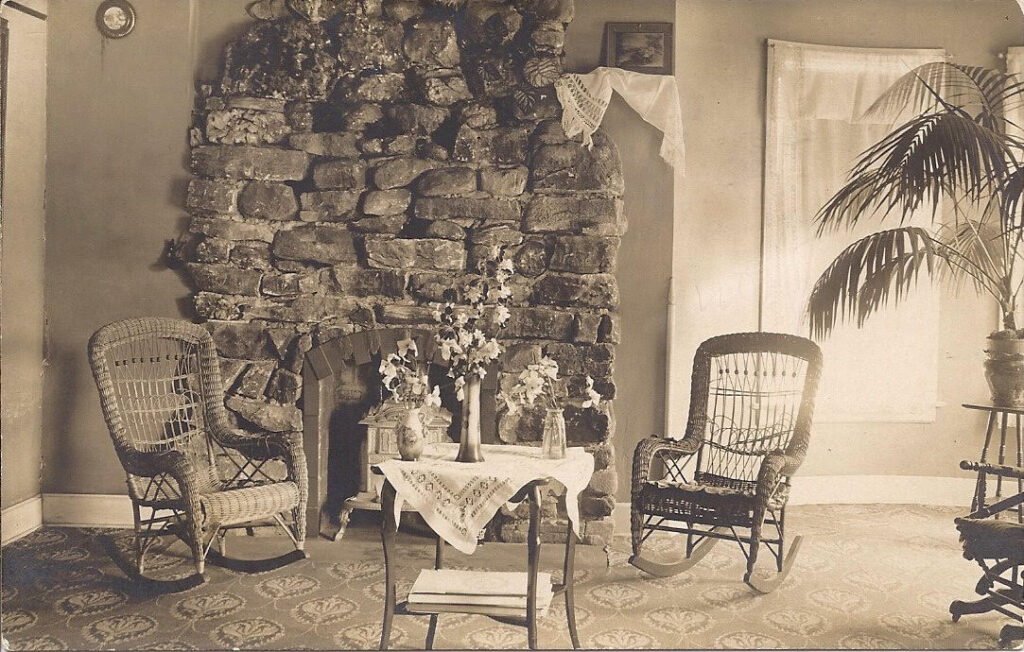
This photo comes from a collection assembled by my grandmother, Valeria Dewane.
The year? Not sure. It is certainly a room inside the round tower and I always imagine that someone sat here, having tea. I love the wicker chairs, the fieldstone fireplace. If the hotel had been salvaged, imagine how this room would be today. I think about an amazing tea with champagne, lovely dill and cream cheese sandwiches, perhaps a few deep fried cheese curds, just to keep it all real. I would want cream puffs for dessert.
Whoever visited, sat here, read a book, had a glass of schnapps, or tea or whatever are the ghosts that I imagine sitting here.
I have a postcard in my collection written by a presumably young man to his family, announcing that he and his sweetheart had eloped and were spending their honeymoon at Maribel Caves. I will hunt that down and post on that another time – perhaps someone who reads that post will know who that young man and his new bride were.
Even though Maribel, the building is fading into time, the stories abound and live on. Thanks to all of you who sent emails with memories.
Sherry
p.s. Wondering why I am writing about Maribel? See my first post.
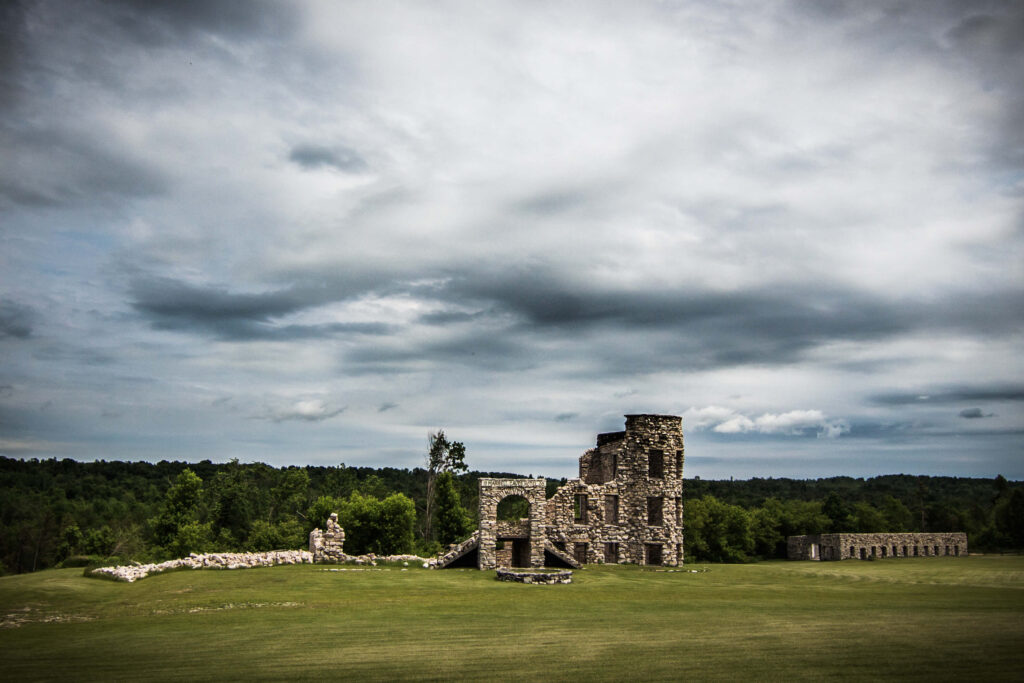
My fascination with Maribel began on my first ride from our home on English Lake, to Maribel. Pronounced, by the way, as MariBEL, with the accent on the last syllable. Grandma Dewane, grew up there. For anyone who’s been to Maribel, you understand the allure. The Maribel Caves Hotel looks like a castle, stories abound, my family history runs deep, caves elicit more wonder, Devil’s River adds to the romance and that creates magic.
My memories of the river, that very first time are vivid. We lived on a lake, which is quite different than a river. Moving water, highly mineralized emits a fresh, clean scent that no lab can reproduce. The miniature waterfalls over layers of limestone caused me to think about the fairies and leprechauns that my grandmother said lived in the woods. Dappled sunlight through leaves, the greenest green of Wisconsin summer and an underlying scent of humus. That dirt and fallen leaves and water and stone, all combined to make a lifelong memory.
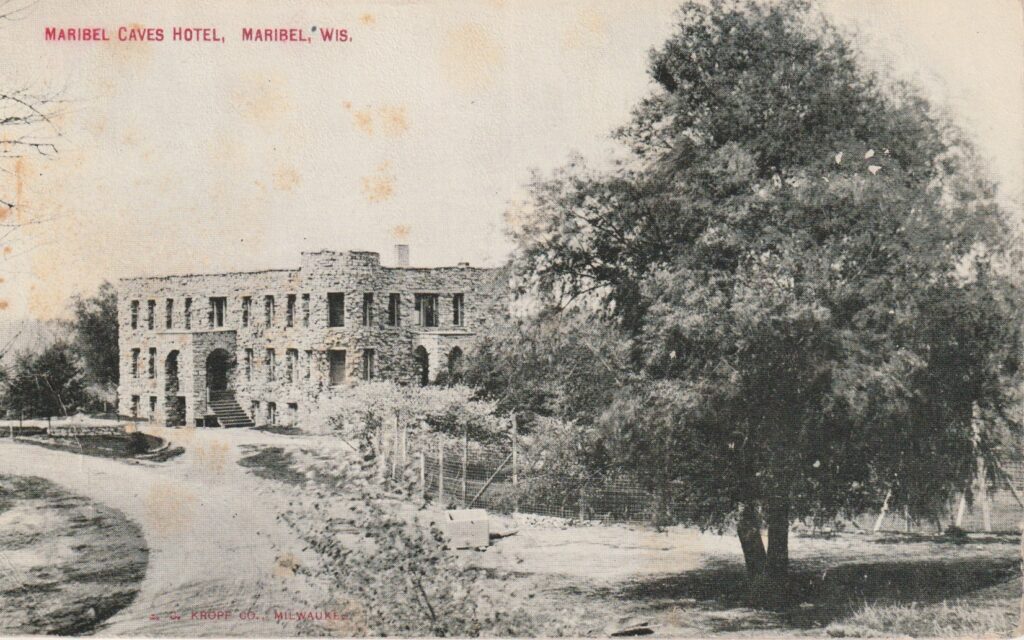
I’d heard stories from relatives about Maribel and I wished that it was still the lovely resort of long gone days. In my mind, Maribel will always be a story, that of moonshine, and dark nights and ghosts and my ancestors’ lives. How I wished we owned it, rebuilt it, opened the bar, made it a functioning hotel again. And that the fairies and leprechauns were real.
Over the years, I’ve seen it change – the first tornado, the windstorm and now, the ruins. I started collecting the bottles, which tell a story. I spent time with my grandmother, asking about the place, the people, the history. I wish I’d spent more. I love that so many people are interested in it, whether it’s the ghost stories, the Al Capone stories, family stories, or the beautiful photographs I see so frequently on social media.
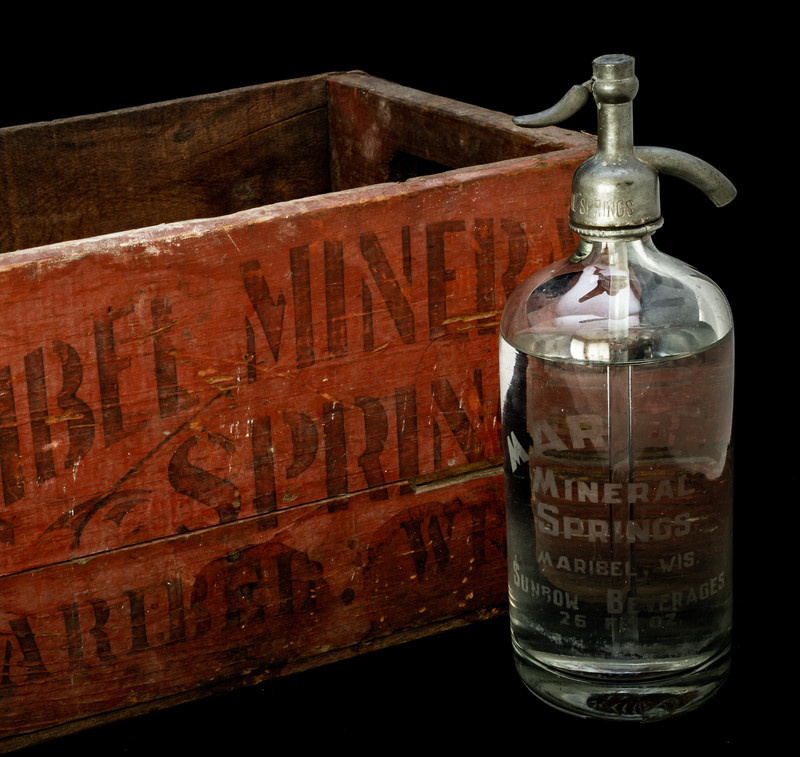
That’s my fascination with this piece of family history – fading like all things into time and place.